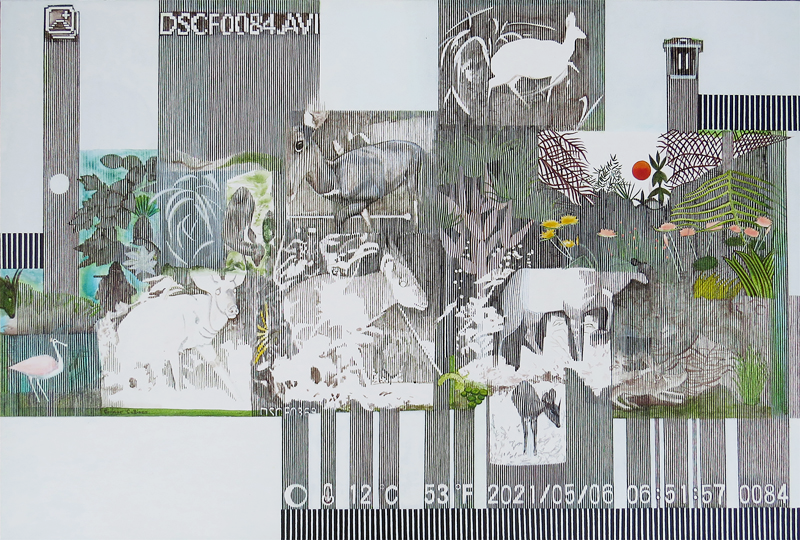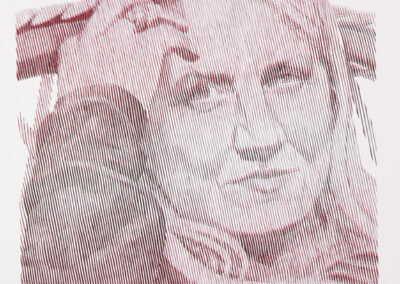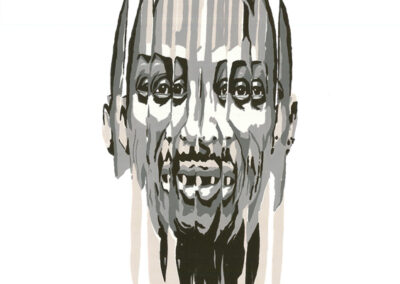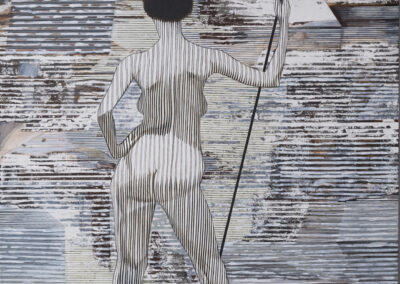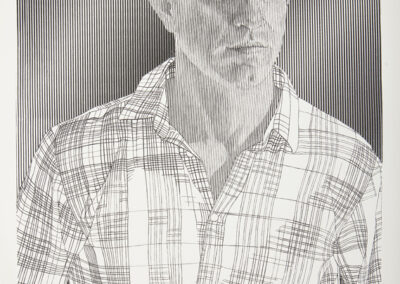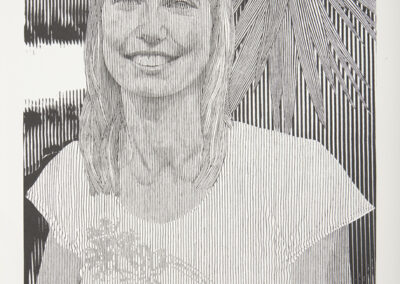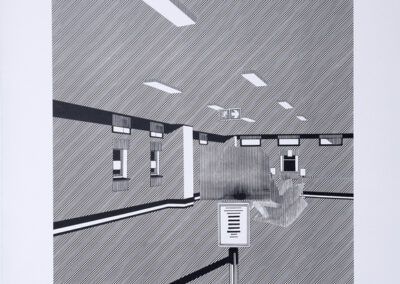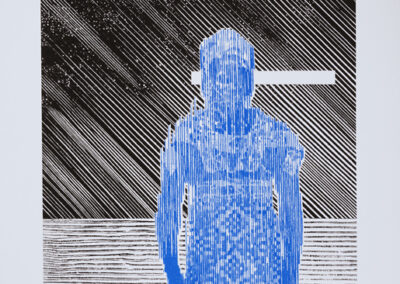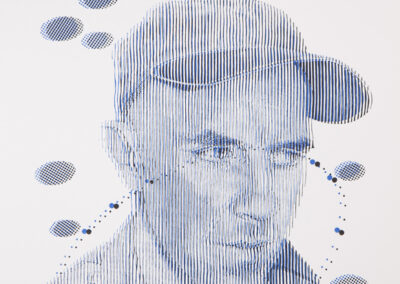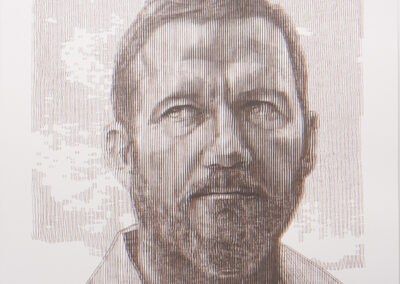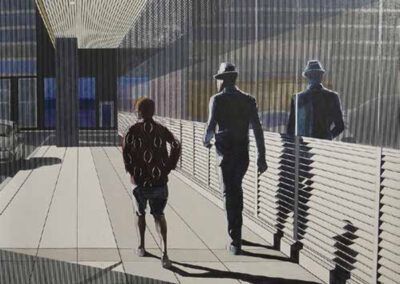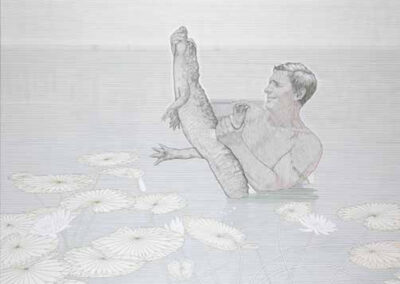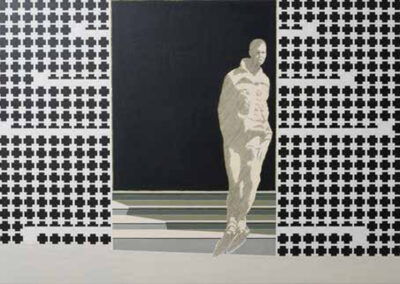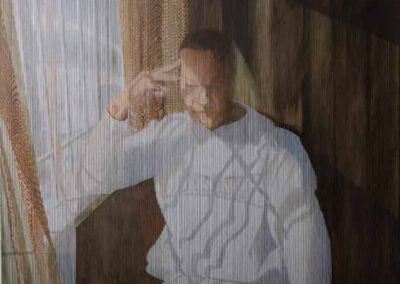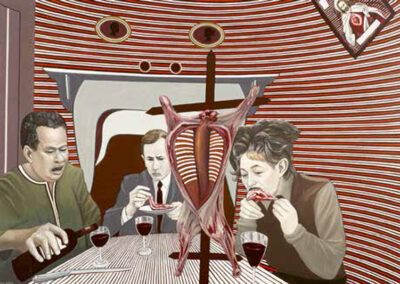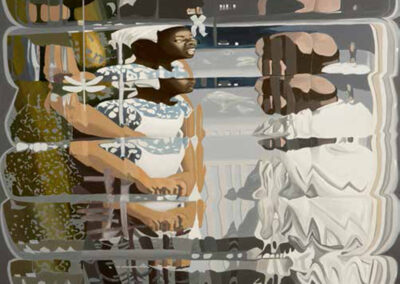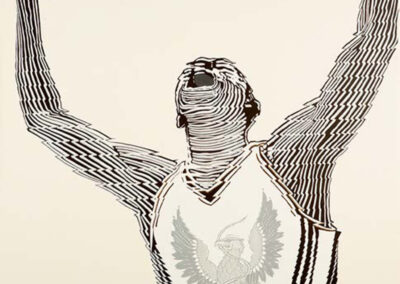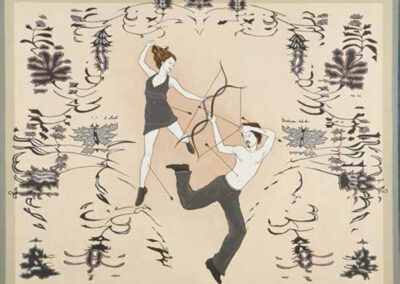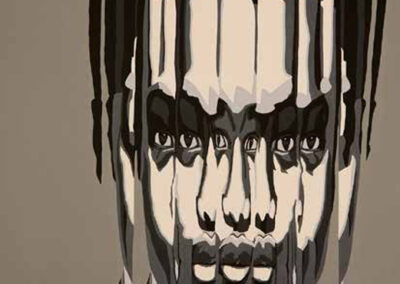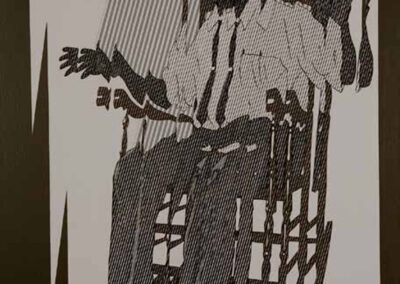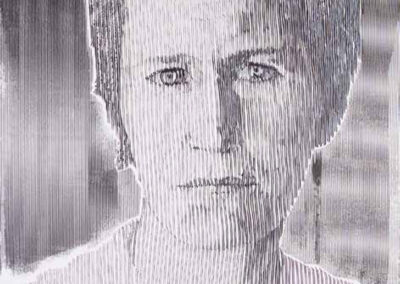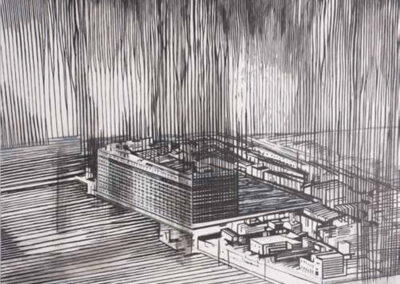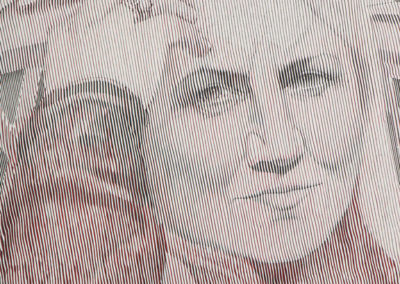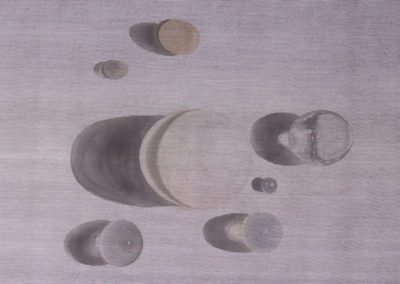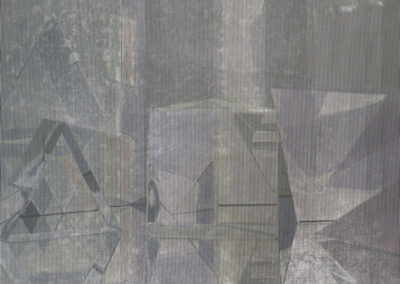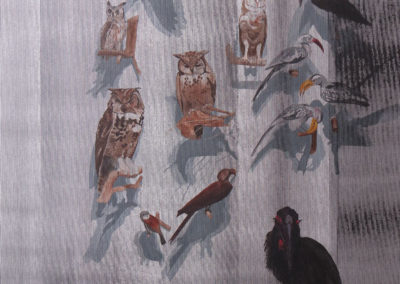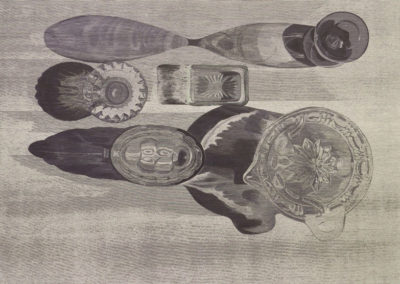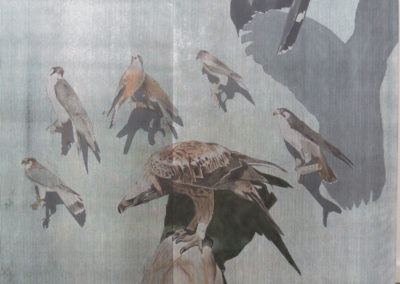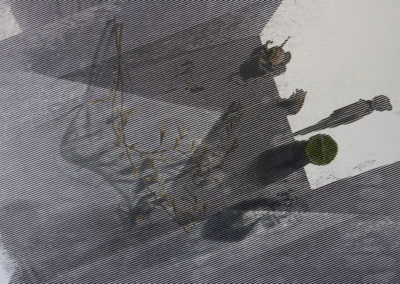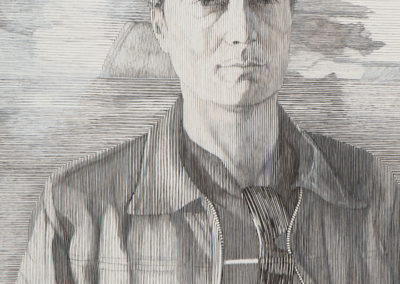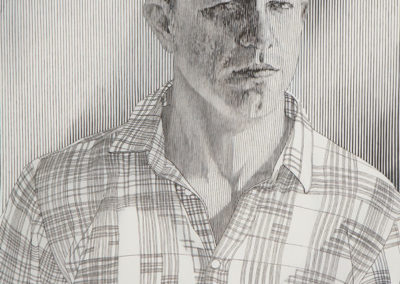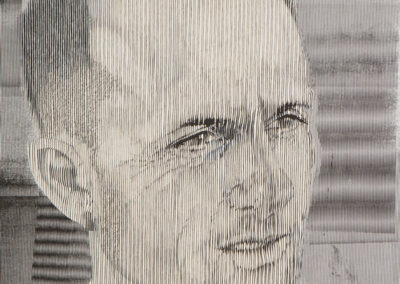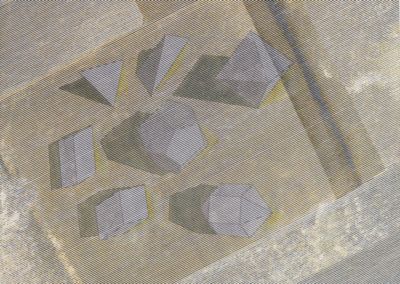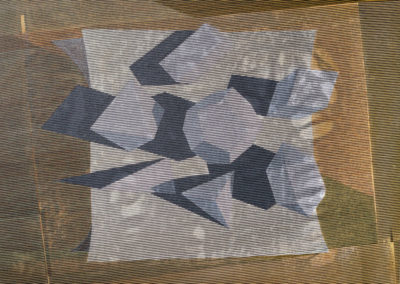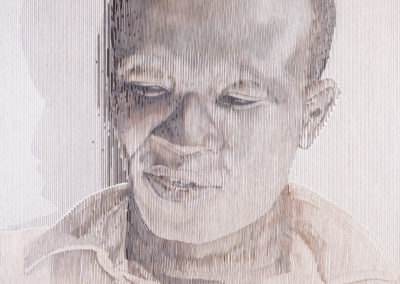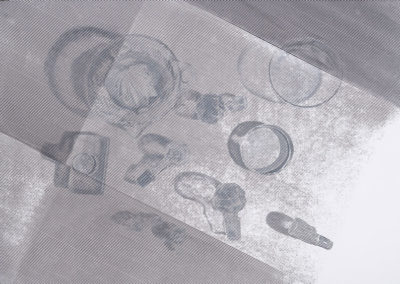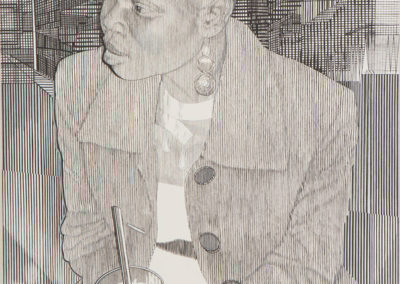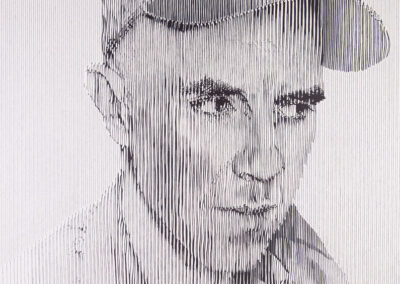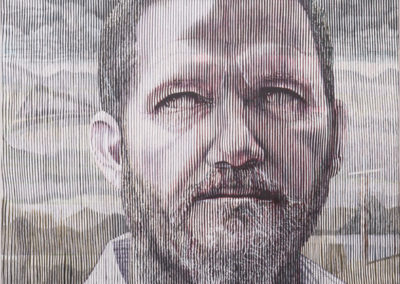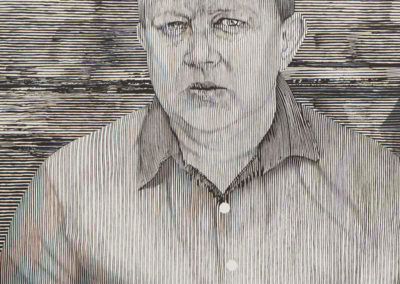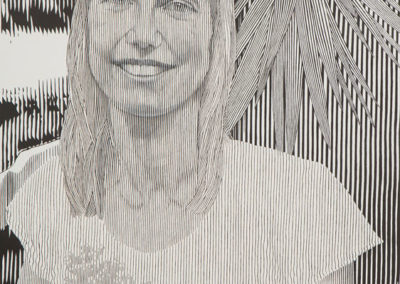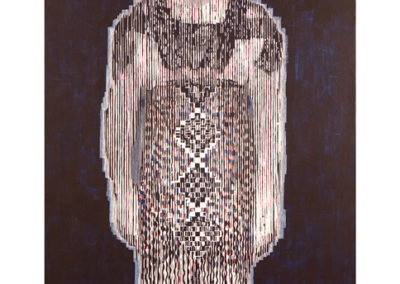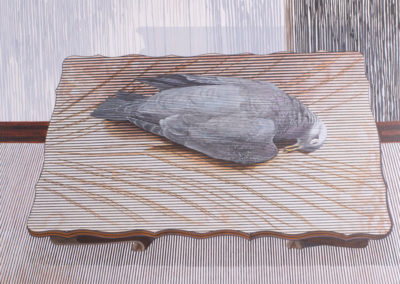Connor Cullinan, Shutter, 2023, Acrylic on canvas, 61 x 91 cm
Connor Cullinan, Transmission, Screen print, 104 x 75 cm, 2016, Edition of 20
Connor Cullinan, Thelma Mort, Screen print, 70 x 50 cm, 2011, Edition of 5
Connor Cullinan, The City, Screen print, 30 x 39 cm, 2015, Edition of 20
Connor Cullinan, Suspect, Screen print, 42 cm x 30, 2009, Edition of 15
Connor Cullinan, Standing Nude, Acrylic on canvas, 88 x 71 cm, 2016
Connor Cullinan, Sphinx, Screen print, 42 x 30 cm, 2009, Edition of 10
Connor Cullinan, Self Portrait, Screen print, 70 x 50 cm, 2012, Edition of 14
Connor Cullinan, Possession, Screen print, 43 x 61 cm, 2008, Edition of 20
Connor Cullinan, Pieter Hugo, Screen print, 70 x 50 cm, 2012, Edition of 18
Connor Cullinan, Nicola Grobler, Screen print, 70 x 50 cm, 2012, Edition of 10
Connor Cullinan, Lizette Chirrime, Screen print, 70 x 50 cm, 2012, Edition of 15
Connor Cullinan, Fluorescents, Screen print, 75 cm x 53 cm, 2016, Edition of 12
Connor Cullinan, Emissary, Screen print, 60.5 x 80 cm, 2015, Edition of 20
Connor Cullinan, Dave Southwood, Screen print, 70 x 50 cm, 2011, Edition of 6
Connor Cullinan, Conrad Botes, Screen print, 70 x 50 cm, 2014, Edition of 24
Connor Cullinan, Charles Maggs, Screen print, 70 x 50 cm, 2012, Edition of 10
Connor Cullinan, Passengers, Acrylic & screen print on canvas, 60.5 x 80 cm, 2020
Connor Cullinan, The Tempest, Acrylic on canvas, 90 x 120 cm, 2015 – 2016
Connor Cullinan, Manifestation, Acrylic on canvas, 127 x 102 cm
Connor Cullinan, The Lodger, Acrylic on canvas, 61 x 91 cm, 2017
Connor Cullinan, Afternoon, Acrylic on canvas, 85 x 120 cm, 2017
Connor Cullinan, Host, Acrylic on canvas, 80 x 120 cm, 2008
Connor Cullinan, Seizure, Acrylic on canvas, 80 x 100 cm, 2008
Connor Cullinan, Possession, Acrylic on canvas, 76 x 102 cm, 2007
Connor Cullinan, Ecstasy, Acrylic on canvas, 90 x 105 cm, 2007 – 8
Connor Cullinan, Sphinx, Acrylic on canvas, 76 x 51 cm, 2009
Connor Cullinan, Augury, Acrylic on canvas, 89.5 x 122 cm, 2008 – 9
Connor Cullinan, Superintendent, Acrylic on canvas, 100 x 70 cm, 2009
Connor Cullinan, Jo O’Connor, Acrylic & screen print on canvas, 102 x 76 cm, 2011
Connor Cullinan, City, Acrylic on canvas, 41 x 51 cm
Connor Cullinan, Paper crystals I, Acrylic & screen print on canvas, 2017, 50 x 70cm
Connor Cullinan, Thelma Mort, Acrylic on canvas, 2012, 121.5 x 88.5cm
Connor Cullinan, Still life With Three Boxes, Acrylic & screen print on canvas, 2017, 59 x 84cm
Connor Cullinan, Still Life with Seven Spheres, Acrylic & screen print on canvas, 2017-8, 65 x 95cm
Connor Cullinan, Still Life with Rods & Cones, 2018, 35.5 x 50cm
Connor Cullinan, Still Life with Prisms, Acrylic & screen print on canvas, 2018, 65 x 89cm
Connor Cullinan, Still life with Owls, Acrylic & screen print on canvas, 2017-8, 117 x 85cm
Connor Cullinan, Still Life with Hourglass, Acrylic & screen print on canvas, 2018, 69 x 98cm
Connor Cullinan, Still Life with Eagle, Acrylic & screen print on canvas, 2017-8, 83 x 103cm
Connor Cullinan, Still Life with Crab, Acrylic & screen print on canvas, 2018, 35.5 x 50cm
Connor Cullinan, Still life with a Crystal Skull, Acrylic & screen print on canvas, 2018, 55 x 70cm
Connor Cullinan, Self Portrait, Acrylic on canvas, 2013, 83.5 x 59cm
Connor Cullinan, Pieter Hugo, Acrylic on canvas, 2013, 102 x 76cm
Connor Cullinan, Paul Edmunds, Acrylic & screen print on canvas, 2012, 122 x 88.5cm
Connor Cullinan, Paper crystals II, Acrylic & screen print on canvas, 2018, 50 x 70cm
Connor Cullinan, Paper crystals I, Acrylic & screen print on canvas, 2018, 50 x 70cm
Connor Cullinan, Mthandeni Ziqubu, Acrylic on canvas, 2011, 127 x 101.5cm
Connor Cullinan, Madonna of the rocks, Acrylic & screen print on canvas, 2018, 41 x 110cm
Connor Cullinan, Looking Glass Still Life, Acrylic & screen print on canvas, 2017, 60 x 85cm
Connor Cullinan, Lizette Chirrime, Acrylic on canvas, 2013, 101.5 x 76cm
Connor Cullinan, Dave Southwood, Acrylic on canvas, 2011, 100 x 100cm
Connor Cullinan, Conrad Botes, 2013, 75 x 55cm
Connor Cullinan, Charles Maggs, Acrylic on canvas, 2012, 100 x 75cm
Connor Cullina, Nicola Grobler, Acrylic on canvas, 2012, 83.5 x 59cm
Connor Cullinan, X, Acrylic on canvas, 2008-9, 200 x 95cm
Connor Cullinan, Rameron, Acrylic on canvas, 2014, 61 x 76cm
